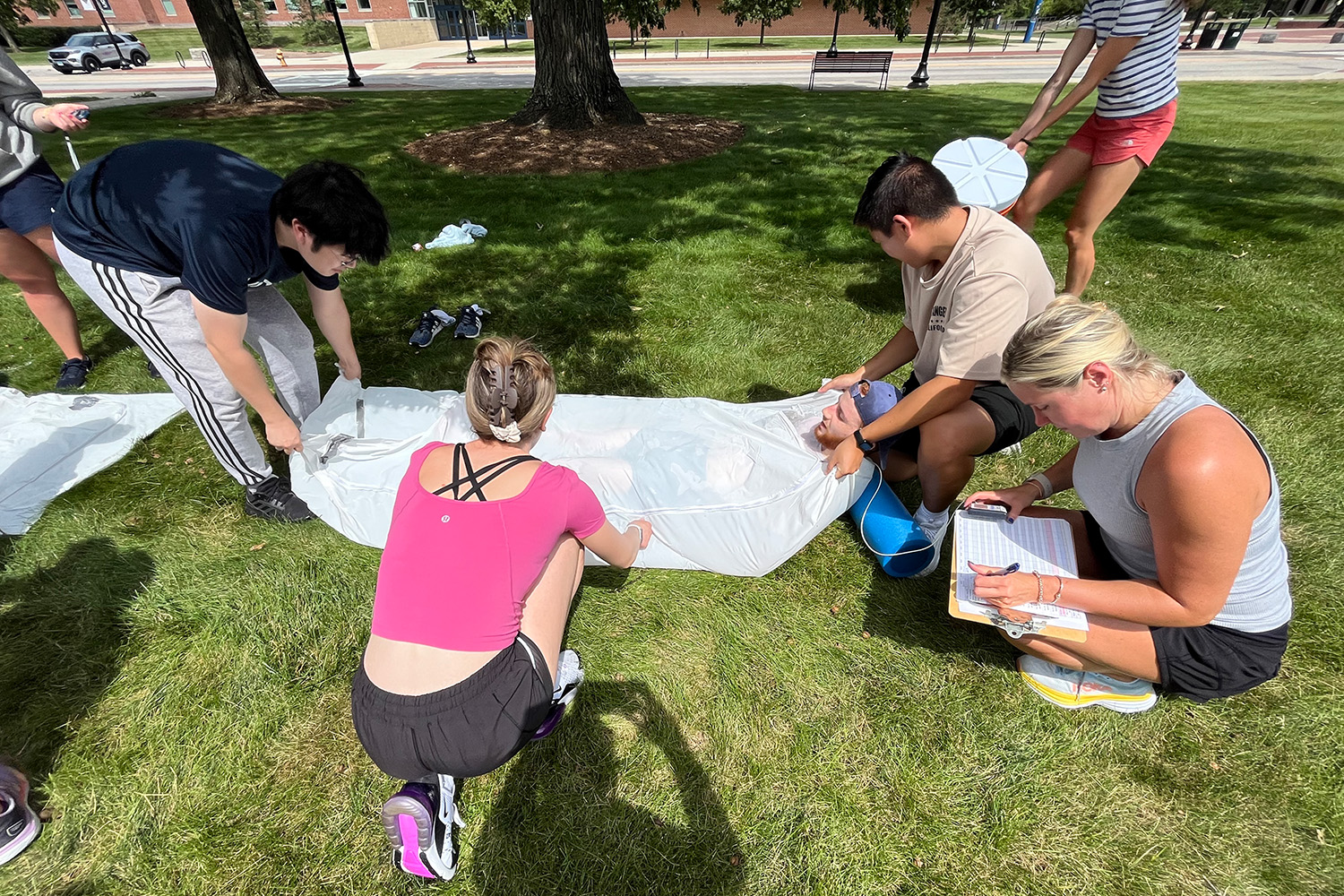Emergency Action Plans
One of the first lines of defense for catastrophic injuries is having a comprehensive, detailed plan for most catastrophic scenarios. This is commonly referred to as an Emergency Action Plan (EAP). The National Athletic Trainers Association has published a position statement titled “Emergency Planning in Athletics” that provides guidelines for the development and implementation of an EAP and is available online. This page summarizes the main points of this document.
An EAP is necessary for any school or university and all of the venues within these institutions where athletes exercise. The EAP provides information to ensure response to an emergency is rapid, appropriate, controlled and precise. All personnel involved with the organization of athletic activities share a professional and legal responsibility to ensure that guidelines are in place to manage any emergency that could arise. The EAP defines the standard of care for these situations, and therefore an institution without an EAP can be found to be negligent in cases of catastrophic injuries.
While being comprehensive, an EAP also needs to be flexible enough to be applicable to any emergency situation. While health care providers are usually responsible for the writing of this document, all those involved with athletic teams (athletic directors, team physicians, athletic trainers, athletic training students, coaches, strength and conditioning coaches, local EMS services) need to be aware and knowledgeable with its contents. It is best to also involve EMS in the writing of the EAP and have the medical director for the school/university approve its contents.
Benefits of Having an Emergency Action Plan
- Risk management strategy: lead to prevention of athletic injury
- Readily prepared for emergency situations
- Ensures that appropriate care is provided in a timely manner
- Decrease chance of legal action taking place
- Protects liability of ATC and school administration
- Leads to a more effective emergency response
The EAP needs to be specific to each athletic venue and address the following components:
- Emergency Personnel – Describe the emergency team involved when the EAP is activated and the roles of each person.
- Emergency Communication – What communication devices are available, where, what number to call in an emergency, specific information and directions to the venue to provide to EMS response team.
- Emergency Equipment – Location of equipment should be quickly accessible and clearly listed. Equipment needs to be maintained on a regular basis.
- Medical Emergency Transportation – Describe options and estimated response times for emergency transportation.
- Venue Directions with a Map – (should be specific to the venue, and provide instructions for easy access to venue)
- Roles of First Responders – Establish scene safety and immediate care of the athlete, activation of EMS, equipment retreival, direction of EMS to the scene
- Emergency Action Plan for Non-Medical Emergencies – These emergencies can refer to the school emergency action plan if one is in place
Other considerations include emergency documentation, where documentation for events that activate the EAP are provided, as well as documentation of EAP rehearsals and personnel training. Examples of EAPs can be found on our website, as well as through the NATA position statement.
While activation of the EAP may be rare, it is vital to ensure that proper care and response is taken when a catastrophic injury occurs. It is important that this document is updated and reviewed on a yearly basis with all athletic personnel. This will provide the best possible care for athletes in the event of an emergency.
- After Action Debriefing 2024
- Emergency Equipment List Recommendations_2024
- EAP Template_Revised 2024
- Checklist_EAP_2024
- Risk Analysis Document for Catastrophic Injuries_2024
- Rehearsal Scenario_AT Present
- Rehearsal Scenario_AT Not Present on Scene but Arrives Late
- Rehearsal Scenario_AT Not Present on Scene but Arrives Late_EHS
- Rehearsal Scenario Considerations_2024
- Pre Event Medical Meeting_2024
- Post EAP Activation Incident Report Template_2024
Word Documents
- After Action Debriefing
- Emergency Equipment List Recommendations
- EAP Template Revised 2024
- Checklist_EAP_2024
- Risk Analysis Document for Catastrophic Injuries 2024
- Rehearsal Scenario AT Present
- Rehearsal Scenario AT Not Present on Scene but Arrives Late
- Rehearsal Scenario AT Not Present on Scene but Arrives Late EHS
- Rehearsal Scenario Considerations 2024
- Pre Event Medical Meeting 2024
- Post EAP Activation Incident Report Template 2024

References
- Almquist J, Valovich McLeod TC, Cavanna A, et al. Summary Statement: Appropriate Medical Care for the Secondary School-Aged Athlete. J Athl Train. 2008;43(4):416-427.
- Andersen J, Courson RW, Kleiner DM, McLoda TA. National Athletic Trainers’ Association position statement: emergency planning in athletics. J Athl Train. 2002;37(1):99–104.
- Courson RW. Preventing sudden death on the athletic field: the emergency action plan. Curr Sports Med Rep. 2007;6:93–100.
- Courson RW, Goldenberg M, Adams KG, et al. Inter-Association Consensus Statement on Best Practices for Sports Medicine Management for Secondary Schools and Colleges. J Athl Train. 2014;49(1):128-137.
- Drezner JA, Courson RW, Roberts WO, et al. Inter-Association Task Force recommendations on emergency preparedness and management of sudden cardiac arrest in high school and college athletic programs: a consensus statement. J Athl Train. 2007;42(1):143–158.
- Hazinski MF, Markenson D, Neish S, et al. Response to cardiac arrest and selected life-threatening medical emergencies: the medical emergency response plan for schools. A statement for healthcare providers, policymakers, school administrators, and community leaders. Circulation. 2004;109(2):278–291.
- Sideline preparedness for the team physician: consensus statement. Med Sci Sports Exerc. 2001;33(5):846–849.